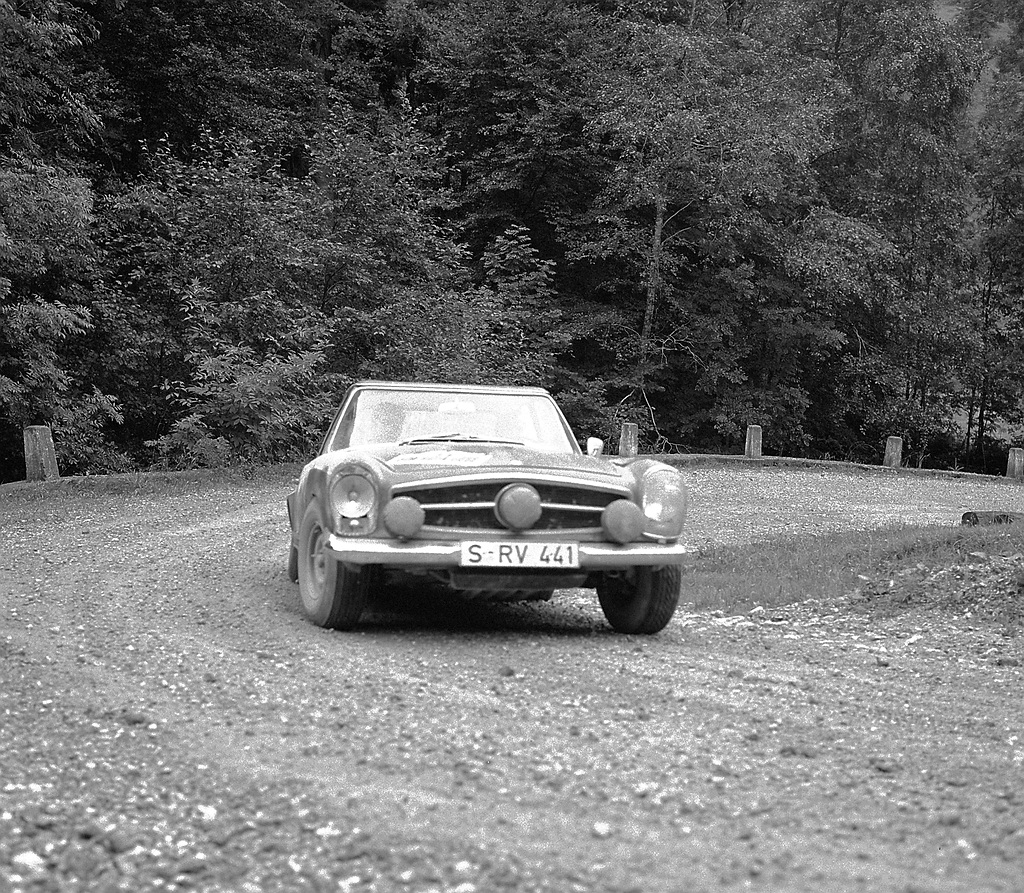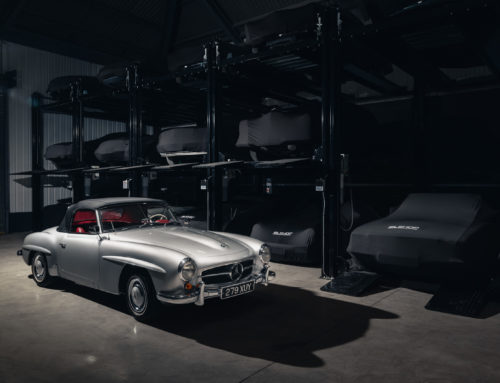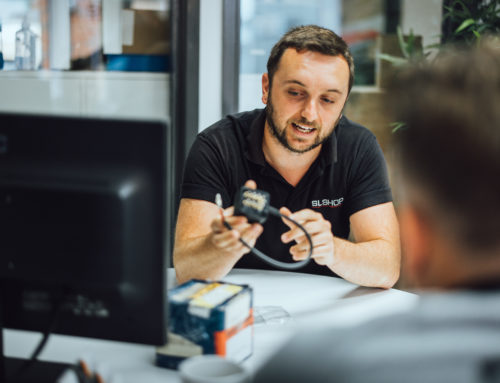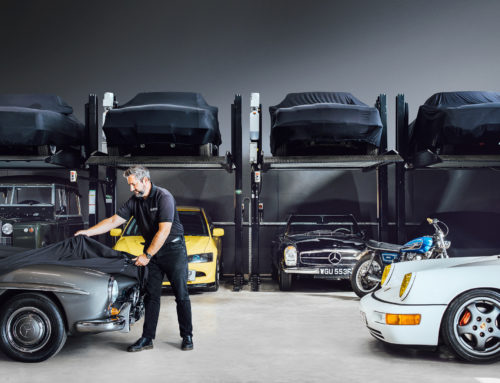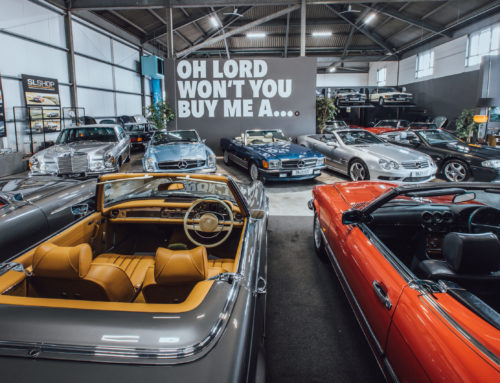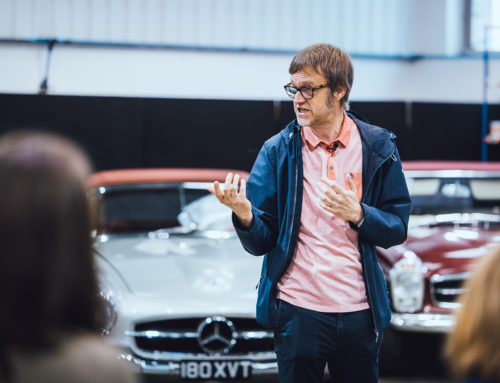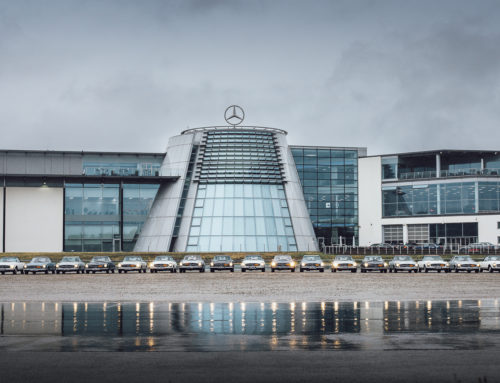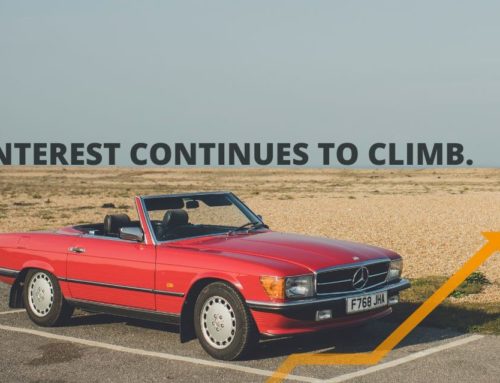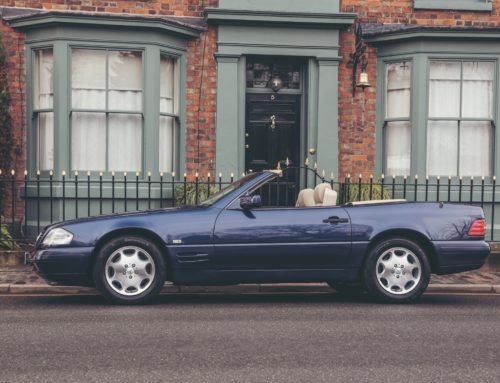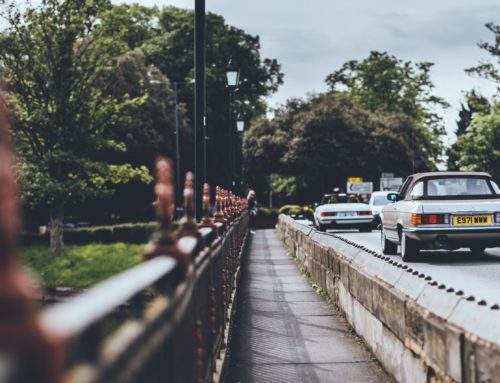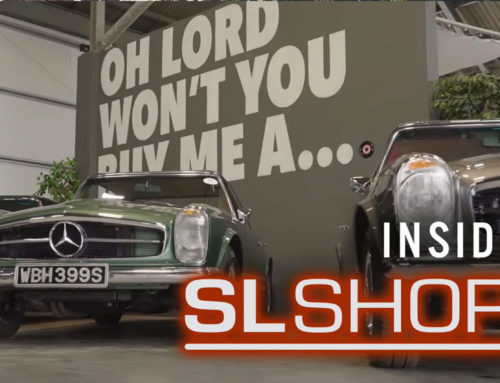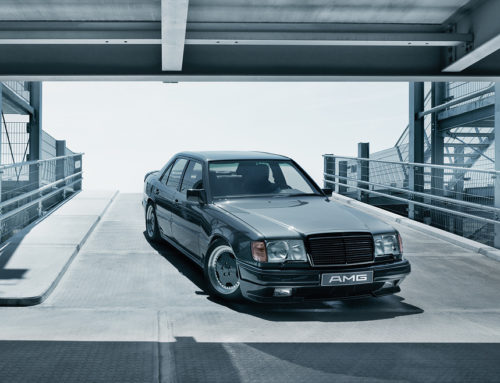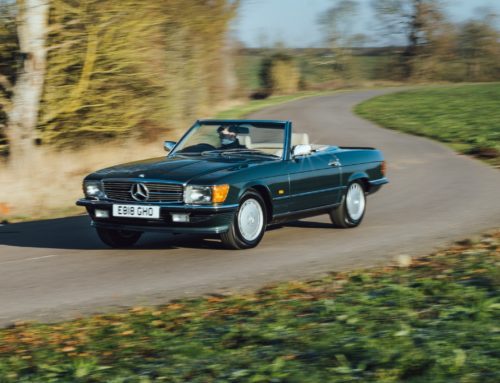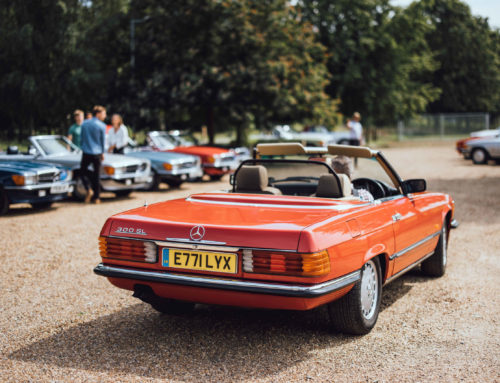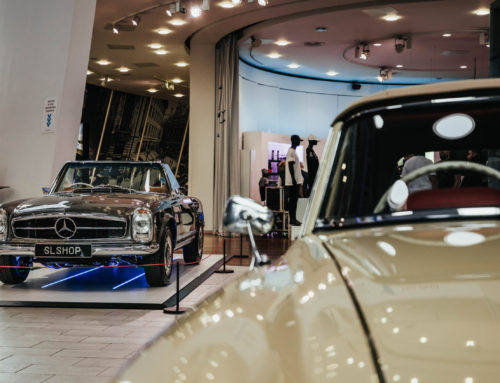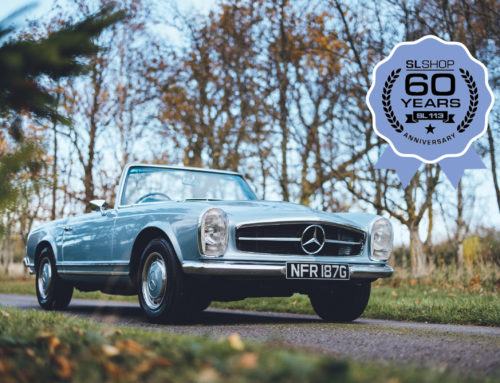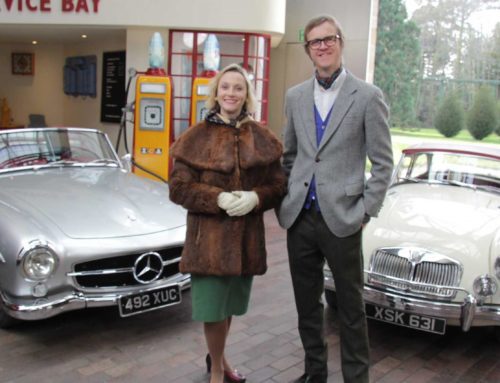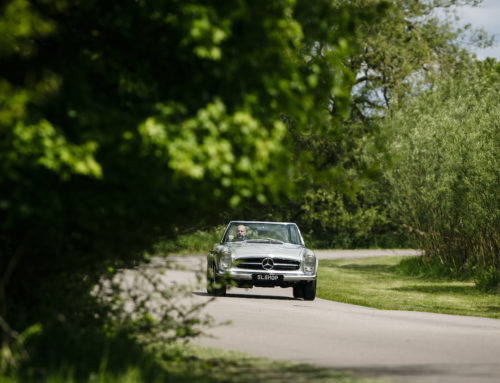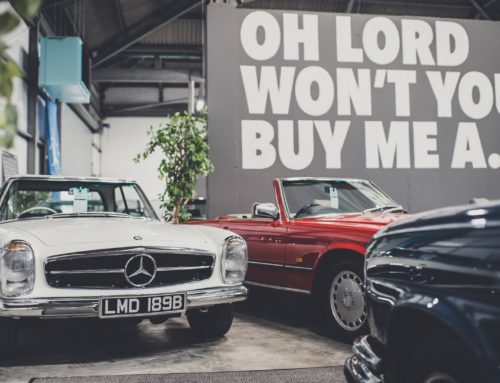It’s the late sixties, the W113 Pagoda has been on sale for approximately four years, with massive success across the European continent. What’s more is that despite criticisms in the lack of power compared to its counterparts, the W113 Pagoda has propelled to the top in the US as affluent buyers relish open road top-down driving.
You might be wondering then, why did the prospect of a V8 powered Pagoda matter? If sales were strong and brand loyalty at an all-time high, why would an eight-cylinder variant by necessary? Well first of all, it was the 1960s – a time of post-war prosperity that remains unmatched today. The oil industry was thriving, fuel prices were cheap and emissions restrictions were not yet top of the agenda. This meant that manufacturers could explore the most absurd combustion configurations possible. This was an era of boundary pushing – to the Moon in a ball of flames or not… Or over the finish line with a trail of rubber crumbs…
THE SL – A HISTORY OF ENVIABLE POWER:
The W198 300SL rocked the automotive world when in its prime, producing 235bhp from a fuel injected naturally aspirated 6-cylinder alloy block. Such was the level of innovation that the a dry sump meant that when cornering at high-speeds, oil lubrication was efficiently maintained. This also reduced the height of the engine, which was tilted 50 degrees towards the driver to improve aerodynamics, also resulting in an intake manifold the full width of the vehicle. Mercedes-Benz even offered a sports camshaft as an optional extra when the vehicle was launched in 1957.
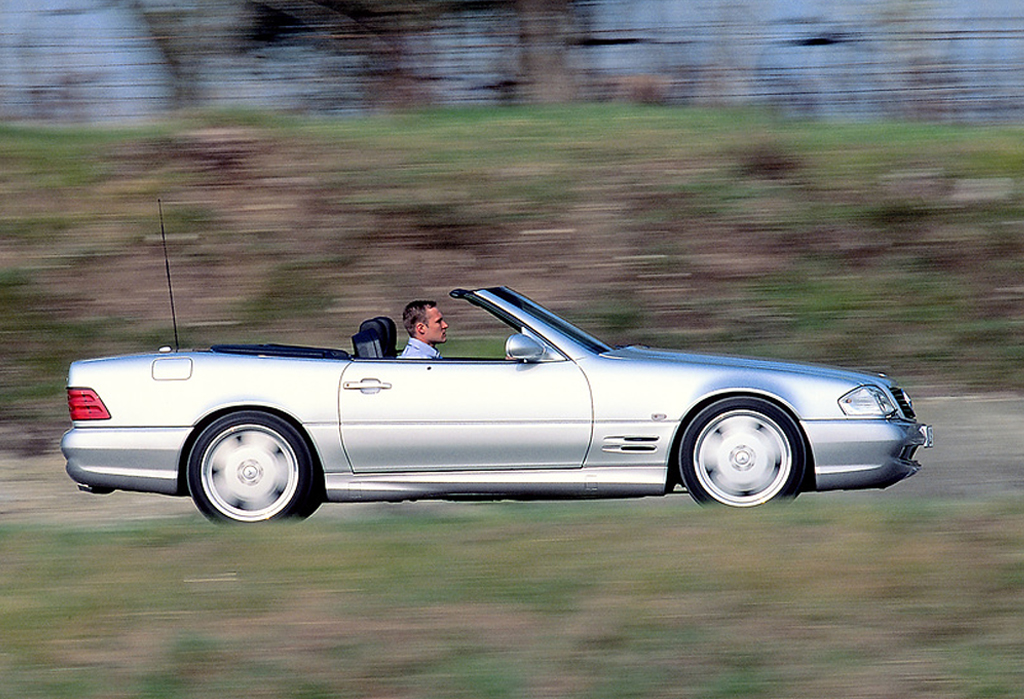
The essence of the SL at this stage was performance – highlighted by the fact this was the fastest road going car of its time. But this is something that would change with the introduction of the W113 Pagoda and thus the SL would be redefined as a luxury grand tourer, which wouldn’t change until the fusion of AMG with the Mercedes-Benz brand in the 1990s.
CONSENSUS AMONG ENGINEERS – BRING BACK POWER!
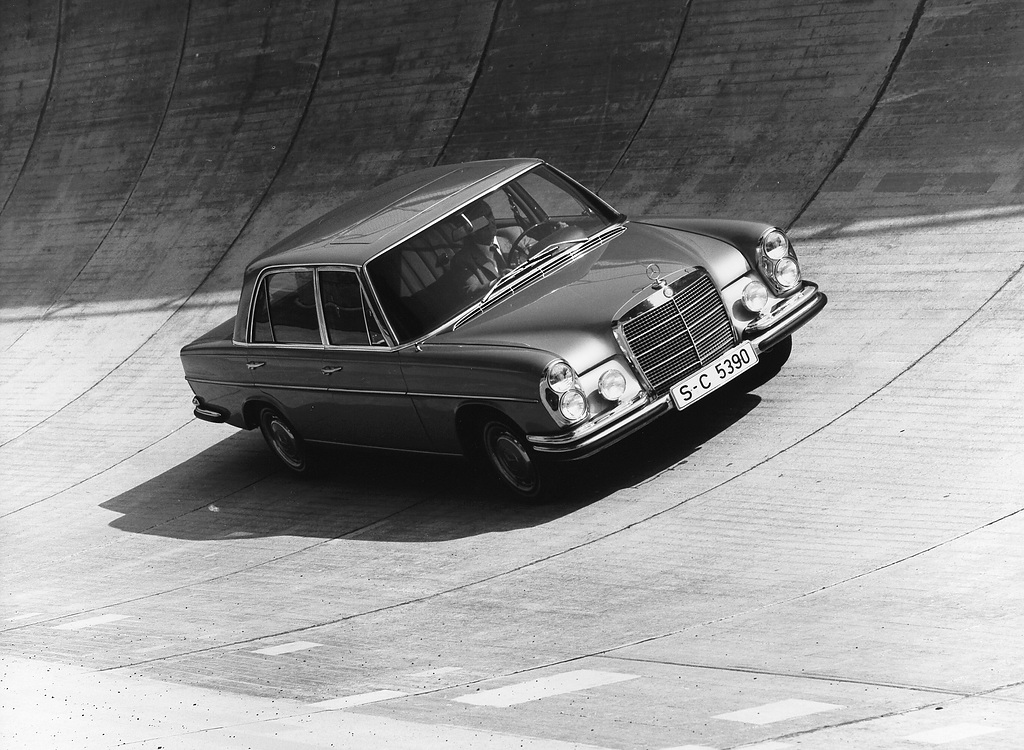
Rumours of an eight-cylinder powered W113 SL Pagoda have circulated for several years, only emerging more recently as the vehicle has climbed to classic status. In 1967, Erich Waxenburger, the father of the 6.3 300SEL – once the fastest MB in production and a band of horsepower obsessed engineers devised the idea to shoehorn an M100 V8 into a 250SL Pagoda,as well as two other models. These included two W108 sedans with the 6.0 litre M100 engine, one uprated to 350bhp and each with a 5-speed ZF manual gearbox. The W113 featured the full 6.3 litres M100 engine paired to an automatic transmittion.
To achieve this, the air compressor at the left of the engine was removed to fit the 6.3 into the Pagoda. In 1967, the 6.3 litres was housed in a cast iron block fitted with mechanical uel injection and produced over 300bhp. More than double that of the standard 250SL M129 II engine. To cope with the new wedge up-front, a massive negative rear camber was setup, with stiff shocks and Dunlop 5.50 M114 racing tires added for stability.
THE RESULT:
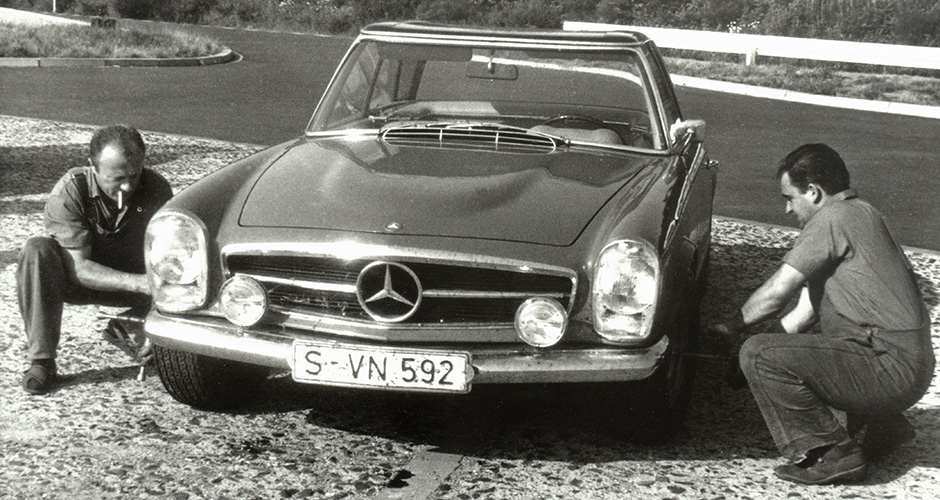
All three vehicles featured in high-speed tests taking place at the Nurburgrin between July 3rd and July 7th, 1967. Over a series of rapid laps, the W113 6.3 would lap the Nurburgring anywhere between 10 minutes 40 seconds and 11 minutes. The current record is 6 minutes 43 seconds by a Porsche 911 GT2 RS. More than 50 years ago, the W113 6.3 litre was just 4 minutes slower than a modern performance car…
Waxenburger reported that the during the testing, despite the measures in place to give the Pagoda stability, there was ‘’severe instability when braking for bends’’ and the front tires would only last nine laps, while the rear would only manage 16. The pursuit of immense Power Pagoda would end here.
Not one of the three cars configured for this sixties power trip was developed. he 6.3 W113 was dismantled and never to be configured again. Perhaps it wasn’t deemed necessary by those in charge or more importantly, perhaps the V8 wasn’t deemed synonymous with the Pagoda’s grand presence… After all, its the taking part that counts. And these engineers certainly took part in the sixties culture of excessive speed, style and consumption.
THE RUMOURS ARE TRUE… W113 SPORTLINE:

Since we launched SportLine, we’ve largely left the Pagoda alone, simply trialing and testing new suspension setups, fitting modern ignition systems, and converting automatics to modern, manual gearboxes. But we’re going to take this further. With thanks to global demand for the Pagoda and associated appetites for competition driving, we’ll be formally launching our Pagoda SportLine offering over the winter period.
Our focus at present will be improving performance from the original engines, avoiding V8 conversions in the immediate future. Those with an appetite for competition driving and performance-orientated classics are urged to contact [email protected] to discuss the options for a Performance Pagoda.
Share With Your Fellow Enthusiasts
It’s the late sixties, the W113 Pagoda has been on sale for approximately four years, with massive success across the European continent. What’s more is that despite criticisms in the lack of power compared to its counterparts, the W113 Pagoda has propelled to the top in the US as affluent buyers relish open road top-down driving.
You might be wondering then, why did the prospect of a V8 powered Pagoda matter? If sales were strong and brand loyalty at an all-time high, why would an eight-cylinder variant by necessary? Well first of all, it was the 1960s – a time of post-war prosperity that remains unmatched today. The oil industry was thriving, fuel prices were cheap and emissions restrictions were not yet top of the agenda. This meant that manufacturers could explore the most absurd combustion configurations possible. This was an era of boundary pushing – to the Moon in a ball of flames or not… Or over the finish line with a trail of rubber crumbs…
THE SL – A HISTORY OF ENVIABLE POWER:
The W198 300SL rocked the automotive world when in its prime, producing 235bhp from a fuel injected naturally aspirated 6-cylinder alloy block. Such was the level of innovation that the a dry sump meant that when cornering at high-speeds, oil lubrication was efficiently maintained. This also reduced the height of the engine, which was tilted 50 degrees towards the driver to improve aerodynamics, also resulting in an intake manifold the full width of the vehicle. Mercedes-Benz even offered a sports camshaft as an optional extra when the vehicle was launched in 1957.

The essence of the SL at this stage was performance – highlighted by the fact this was the fastest road going car of its time. But this is something that would change with the introduction of the W113 Pagoda and thus the SL would be redefined as a luxury grand tourer, which wouldn’t change until the fusion of AMG with the Mercedes-Benz brand in the 1990s.
CONSENSUS AMONG ENGINEERS – BRING BACK POWER!

Rumours of an eight-cylinder powered W113 SL Pagoda have circulated for several years, only emerging more recently as the vehicle has climbed to classic status. In 1967, Erich Waxenburger, the father of the 6.3 300SEL – once the fastest MB in production and a band of horsepower obsessed engineers devised the idea to shoehorn an M100 V8 into a 250SL Pagoda,as well as two other models. These included two W108 sedans with the 6.0 litre M100 engine, one uprated to 350bhp and each with a 5-speed ZF manual gearbox. The W113 featured the full 6.3 litres M100 engine paired to an automatic transmittion.
To achieve this, the air compressor at the left of the engine was removed to fit the 6.3 into the Pagoda. In 1967, the 6.3 litres was housed in a cast iron block fitted with mechanical uel injection and produced over 300bhp. More than double that of the standard 250SL M129 II engine. To cope with the new wedge up-front, a massive negative rear camber was setup, with stiff shocks and Dunlop 5.50 M114 racing tires added for stability.
THE RESULT:

All three vehicles featured in high-speed tests taking place at the Nurburgrin between July 3rd and July 7th, 1967. Over a series of rapid laps, the W113 6.3 would lap the Nurburgring anywhere between 10 minutes 40 seconds and 11 minutes. The current record is 6 minutes 43 seconds by a Porsche 911 GT2 RS. More than 50 years ago, the W113 6.3 litre was just 4 minutes slower than a modern performance car…
Waxenburger reported that the during the testing, despite the measures in place to give the Pagoda stability, there was ‘’severe instability when braking for bends’’ and the front tires would only last nine laps, while the rear would only manage 16. The pursuit of immense Power Pagoda would end here.
Not one of the three cars configured for this sixties power trip was developed. he 6.3 W113 was dismantled and never to be configured again. Perhaps it wasn’t deemed necessary by those in charge or more importantly, perhaps the V8 wasn’t deemed synonymous with the Pagoda’s grand presence… After all, its the taking part that counts. And these engineers certainly took part in the sixties culture of excessive speed, style and consumption.
THE RUMOURS ARE TRUE… W113 SPORTLINE:

Since we launched SportLine, we’ve largely left the Pagoda alone, simply trialing and testing new suspension setups, fitting modern ignition systems, and converting automatics to modern, manual gearboxes. But we’re going to take this further. With thanks to global demand for the Pagoda and associated appetites for competition driving, we’ll be formally launching our Pagoda SportLine offering over the winter period.
Our focus at present will be improving performance from the original engines, avoiding V8 conversions in the immediate future. Those with an appetite for competition driving and performance-orientated classics are urged to contact [email protected] to discuss the options for a Performance Pagoda.
Share With Your Fellow Enthusiasts
More from Journal
CARE
THE ULTIMATE CERTIFIED SERVICING INVESTMENT PLAN
Your ownership journey matters to us, which is why we have created a simple certified servicing investment plan, tailored to your individual needs and aspirations.
Start investing today and our dedicated CARE team will work with you to increase the value and enjoyment you receive from your vehicle.

STAY IN TUNE WITH SLSHOP MOMENTS
As part of SLSHOP’s community of enthusiasts, you’ll be the first to hear about events and tours, key product offers, exciting stories from owners around the world and of course… our latest additions to the showroom. So, be the first to know and you might just sneak a car on your driveway or take your car’s condition to new heights with our exclusive replacement parts.
Or, visit SLSHOP Journal
